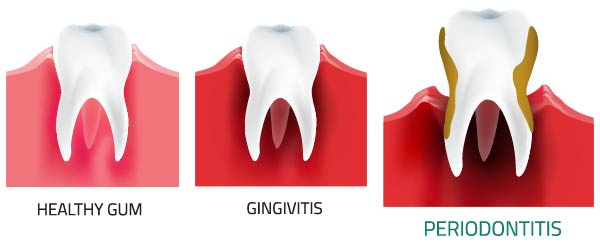In the battle against periodontal disease, a silent but serious threat to oral health, flossing emerges as a potent weapon. Despite its simplicity, regular flossing plays a crucial role in preventing and managing periodontal disease, offering a proactive approach to maintaining healthy gums and preserving your smile. Let's explore how incorporating flossing into your daily routine can be a game-changer in the fight against periodontal disease.

Understanding Periodontal Disease:
Periodontal disease, commonly known as gum disease, is a progressive condition characterized by inflammation and infection of the gums and surrounding tissues. It typically begins with gingivitis, marked by red, swollen gums that may bleed during brushing or flossing. Without intervention, gingivitis can advance to periodontitis, leading to irreversible damage to the gums and supporting structures of the teeth.
The Role of Flossing in Periodontal Health:
Flossing is a cornerstone of good oral hygiene, particularly in the prevention and management of periodontal disease. Here's how flossing contributes to periodontal health:
-
Plaque Removal: Plaque, a sticky film of bacteria that forms on the teeth, is a primary contributor to periodontal disease. Flossing helps remove plaque from between teeth and along the gumline, where it can accumulate and contribute to gum inflammation and infection.
-
Preventing Gum Inflammation: By removing plaque and debris from the gumline, flossing helps prevent the onset of gingivitis, the earliest stage of periodontal disease. Regular flossing reduces the risk of gum inflammation and bleeding, promoting healthier gums and preventing the progression to more advanced stages of gum disease.
-
Reducing Gum Pockets: In advanced cases of periodontal disease, bacteria can penetrate below the gumline, leading to the formation of periodontal pockets – spaces between the teeth and gums where bacteria thrive. Flossing helps disrupt the buildup of plaque and bacteria in these pockets, reducing their depth and preventing further damage to the gums and supporting tissues.
Incorporating Flossing into Your Periodontal Care Routine:
To harness the benefits of flossing for periodontal health, it's essential to incorporate flossing into your daily oral hygiene routine. Here are some tips to help you get started:
-
Floss Daily: Aim to floss at least once a day, preferably before bedtime, to remove plaque and debris from between teeth and along the gumline.
-
Use Proper Technique: Use a gentle yet thorough flossing technique, curving the floss around each tooth and reaching below the gumline to remove plaque and bacteria.
-
Choose the Right Floss: Select a soft, waxed floss that glides smoothly between teeth without causing discomfort, we recommend Flossy's dental floss.
Conclusion: Empower Your Smile with Flossing
In conclusion, flossing is a vital component of periodontal disease prevention and management. By incorporating regular flossing into your daily routine and using proper technique, you can remove plaque, reduce gum inflammation, and protect against the progression of periodontal disease. Don't underestimate the power of flossing – it's a simple yet effective way to safeguard your oral health and preserve your smile for years to come.